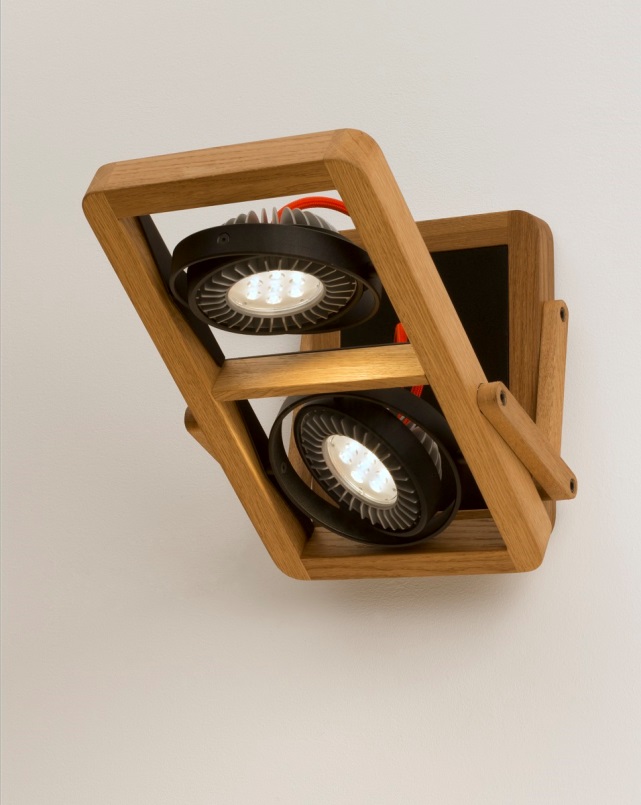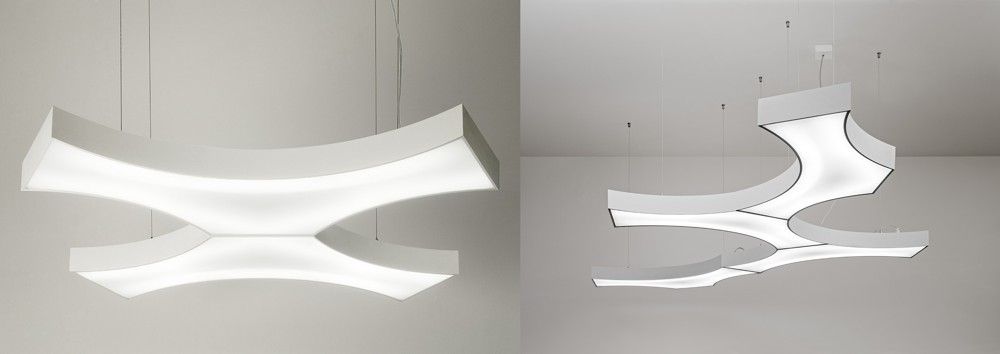
<HALLA> What is the taste of Czech clients and how do they choose their designers? </HALLA>
Interview with Daniel Černý, Chairman of the Board
The company HALLA is one of the leading Czech manufacturers of designer lighting. In today's article, we bring you an interview with the chairman of the board of this company, Daniel Černý, who saved it from a crisis. You will learn, for example, what he considers to be the prevailing level of taste among Czech clients, as well as how HALLA selects its designers.
What was your journey to lighting technology? What captivated, fascinated, or attracted you to this field?
I chose lighting technology as a field of study while pursuing Electrical Engineering at the Faculty of Electrical Engineering of the Czech Technical University in Prague. I was intrigued by the intersection of the technical field with art and architecture, and the influence of light on the human organism. Unlike purely technical lectures from electrical engineering disciplines, the lectures on architectural lighting, light comfort in the interior, and similar topics felt like they were from another world.
Did you not aspire to change professions and become a designer?
No, I wouldn't have dared to do that back then or even today. But it is true that I am still interested in the development of our new luminaires, even though I am no longer directly involved in it – this is the work of our development department and designers.
Could you reveal which anti-crisis measure was successful?
I believe it was a combination of many individual measures, from savings to growth-oriented ones. However, a key role was played by the decision to focus on new foreign markets and to direct the product portfolio towards more design-oriented products with greater added value.
I assume that you are more of a businessman than an artist; what do you see as the weak points of designers, and in what areas should they "improve"?
As I mentioned earlier, I originally come from a more technical background, but the truth is that during my professional career, I have moved into the commercial and managerial field. I think that mutual understanding and respect are crucial for good collaboration between the manufacturer and the designer. Thus, if I were to mention a weak point of designers, it could be their lack of understanding of the manufacturer's requirements, which stem from the market's needs for the developed product.
Could you provide a specific example of such a misunderstanding of the 'market needs'?
One example that comes to mind is the unwillingness to change the dimensions of a luminaire to accommodate the electronics needed for a specific type of dimming that is used almost exclusively in the United Kingdom, and without which the product would be unsellable in that market.
How do you choose your designers?
When selecting a designer, shared values and mutual understanding are important to us. If there is alignment between us as a manufacturer on one side and the designer on the other, it does not matter whether we collaborate with a young student like Matúš Opálka, the author of the INDI luminaire concept awarded with the Red Dot Award, or with experienced Dutch architect Rob Van Beek, who has been dealing with luminaires for over 30 years, or with architect Luka Križek, who has successful interior and furniture designs behind him. We try to work with multiple designers simultaneously to bring more perspectives, opinions, and new stimuli into our products.
A relatively unusual form of collaboration is the HALLA Design team, where each designer works on their own design, which is confronted with the views of others, resulting in not only very interesting designs but also mutual enrichment among team members.
Are all of the aforementioned designers part of this team?
In addition to our head of the development department, the team includes designers Rob Van Beek, Matúš Opálka, Simona Hrušková, with whom we collaborated during her studies at UMPRUM, Jakub Stedina, and supervisor Ivan Dlabač.
How often do new collections come out, and how many collections do you currently offer?
Currently, we have 35 various families of luminaires in our portfolio, and we are working on approximately 10 new designs that we will introduce to the market in the next 1.5 years.
Who are you targeting? Who are your luminaires primarily intended for?
Our luminaires are primarily intended for commercial spaces, such as administrative and commercial centers, cultural spaces, restaurants, but also modern residential spaces.
How would you evaluate the development of Czech clients' taste? Can you compare it with neighboring countries?
Given that about 70% of our production goes to export markets, we can well compare the tastes of Czech and foreign clients, and it can be said that they do not differ significantly anymore; there is a clear positive shift in this area in our country.
There is often talk about the unattainable era of the golden sixties, the Brussels dream, etc. – are we already reaching a similar level, or are we still far from it?
Awareness of design is growing among the general public year by year. And although there will always be a large number of clients for whom price is the only evaluating criterion, I am convinced that there is indeed enough room for quality and original design in the Czech Republic.
In what direction will the design of future luminaires head? Simplification or rather decoration?
The arrival of LED technology in the field of lighting has brought unprecedented possibilities that have not yet been fully utilized. Besides excellent technical parameters, luminaires can be developed in virtually any shape compared to traditional light sources, so we can expect more luminaires with complex shapes, although simpler designs will persist in the technical lighting segment.
What was your journey to lighting technology? What captivated, fascinated, or attracted you to this field?
I chose lighting technology as a field of study while pursuing Electrical Engineering at the Faculty of Electrical Engineering of the Czech Technical University in Prague. I was intrigued by the intersection of the technical field with art and architecture, and the influence of light on the human organism. Unlike purely technical lectures from electrical engineering disciplines, the lectures on architectural lighting, light comfort in the interior, and similar topics felt like they were from another world.
 |
| ARBO |
No, I wouldn't have dared to do that back then or even today. But it is true that I am still interested in the development of our new luminaires, even though I am no longer directly involved in it – this is the work of our development department and designers.
Could you reveal which anti-crisis measure was successful?
I believe it was a combination of many individual measures, from savings to growth-oriented ones. However, a key role was played by the decision to focus on new foreign markets and to direct the product portfolio towards more design-oriented products with greater added value.
I assume that you are more of a businessman than an artist; what do you see as the weak points of designers, and in what areas should they "improve"?
As I mentioned earlier, I originally come from a more technical background, but the truth is that during my professional career, I have moved into the commercial and managerial field. I think that mutual understanding and respect are crucial for good collaboration between the manufacturer and the designer. Thus, if I were to mention a weak point of designers, it could be their lack of understanding of the manufacturer's requirements, which stem from the market's needs for the developed product.
 |
| MILA |
Could you provide a specific example of such a misunderstanding of the 'market needs'?
One example that comes to mind is the unwillingness to change the dimensions of a luminaire to accommodate the electronics needed for a specific type of dimming that is used almost exclusively in the United Kingdom, and without which the product would be unsellable in that market.
How do you choose your designers?
When selecting a designer, shared values and mutual understanding are important to us. If there is alignment between us as a manufacturer on one side and the designer on the other, it does not matter whether we collaborate with a young student like Matúš Opálka, the author of the INDI luminaire concept awarded with the Red Dot Award, or with experienced Dutch architect Rob Van Beek, who has been dealing with luminaires for over 30 years, or with architect Luka Križek, who has successful interior and furniture designs behind him. We try to work with multiple designers simultaneously to bring more perspectives, opinions, and new stimuli into our products.
A relatively unusual form of collaboration is the HALLA Design team, where each designer works on their own design, which is confronted with the views of others, resulting in not only very interesting designs but also mutual enrichment among team members.
 |
| UNDA |
Are all of the aforementioned designers part of this team?
In addition to our head of the development department, the team includes designers Rob Van Beek, Matúš Opálka, Simona Hrušková, with whom we collaborated during her studies at UMPRUM, Jakub Stedina, and supervisor Ivan Dlabač.
How often do new collections come out, and how many collections do you currently offer?
Currently, we have 35 various families of luminaires in our portfolio, and we are working on approximately 10 new designs that we will introduce to the market in the next 1.5 years.
Who are you targeting? Who are your luminaires primarily intended for?
Our luminaires are primarily intended for commercial spaces, such as administrative and commercial centers, cultural spaces, restaurants, but also modern residential spaces.
How would you evaluate the development of Czech clients' taste? Can you compare it with neighboring countries?
Given that about 70% of our production goes to export markets, we can well compare the tastes of Czech and foreign clients, and it can be said that they do not differ significantly anymore; there is a clear positive shift in this area in our country.
There is often talk about the unattainable era of the golden sixties, the Brussels dream, etc. – are we already reaching a similar level, or are we still far from it?
Awareness of design is growing among the general public year by year. And although there will always be a large number of clients for whom price is the only evaluating criterion, I am convinced that there is indeed enough room for quality and original design in the Czech Republic.
In what direction will the design of future luminaires head? Simplification or rather decoration?
The arrival of LED technology in the field of lighting has brought unprecedented possibilities that have not yet been fully utilized. Besides excellent technical parameters, luminaires can be developed in virtually any shape compared to traditional light sources, so we can expect more luminaires with complex shapes, although simpler designs will persist in the technical lighting segment.
|
The English translation is powered by AI tool. Switch to Czech to view the original text source.
0 comments
add comment













